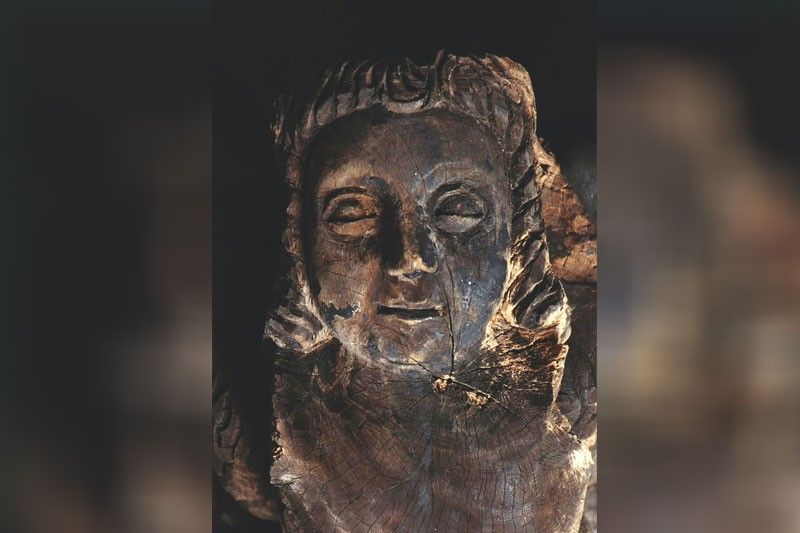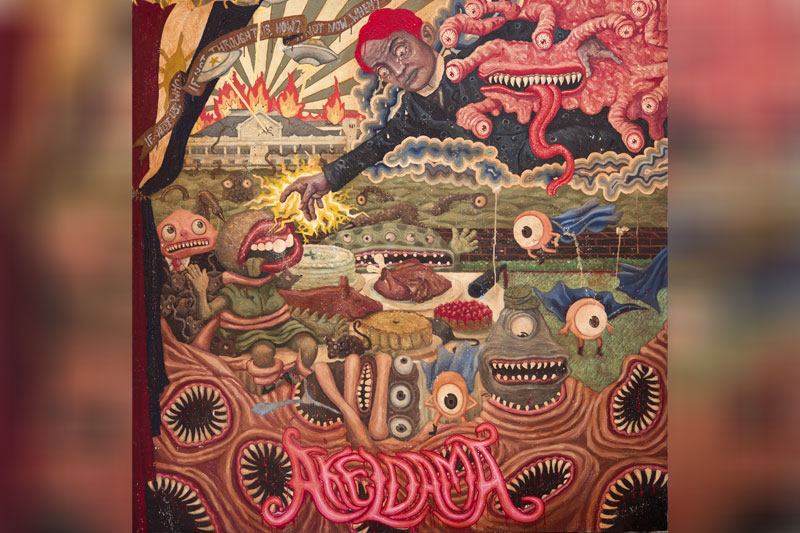Life imitates virus, goes on stealth mode


For every Green Day or Alanis concert cancelled, you can bet your bottom dollar that there will be an uptick elsewhere even if it’s just on Netflix or other streaming service. (Alas, no stats on increased activity on the porn sites are available as yet, since none of my usual sources are willing to ‘fess up.)
The 14th edition of the annual affordable-art fair “Art in the Park” has, as of this writing, just announced its postponement. “Mindful of our collective responsibility to help contain the spread of COVID-19,” the organizers said.

León Gallery, on the other hand, will launch its latest online sale, called simply “The Summer Auction” on March 28. It’s designed to keep the buying of art virus-free but just as thrilling as you bid from the comfort of your own freshly sanitized home. The event features paintings and furniture selected by Pepito Albert, Jonathan Matti, and Mark Wilson, none of whom need any introduction. Two of the rather splendiferous antiques include a corbel which is said to have been recovered from the ashes of a smoldering 17th-century church, its rampant angel suitably blackened. The other is an elegant aparador (wardrobe) owned by Margarita “Tingting” Cojuangco. Other finds include works by Kim Oliveros, Jonathan Olazo and Christian Tamondong.
There’s plenty of the positive to find in this long emergency — even if you’re not a silver-linings kind of guy. Here’s a list of things that should be doing well under the current circumstances:
“Flight to Safety” investments such as the US dollar and of course, gold, although jewelers will complain. (On the other hand, the price of oil and interest rates are dropping, which is always good news for the Philippine economy.)

Online shopping to make up for the lost trips to the mall — and to spend the money saved from not traveling.
Consequently, courier and delivery services for just about everything, especially for food, should be doing brisk business.
24-hour stores should see brisk business late at night and early in the a.m. as people avoid the crowds.
At-home products and services, from microwaveable popcorn to foot spas, should be more popular.
“Desert Island” vacation destinations, the more isolated, the less crowded, the better; which probably means these will be more expensive.
Land travel (versus air travel); Private vans over commercial buses; Will also be increasingly economic for the ongoing oil price-cutting war

Everything from health food stores (such as “Healthy Options”) along with any kind of vitamin or immune-boosting pill; Vaccines for pneumonia and the flu
Cleaning products and services; sanitation equipment such as those fancy vacuum cleaners
Technology like laptops, iPads, for gaming and entertainment — and for remote office and school operations; bigger TV screens, multiple units; not to mention the educational toys to substitute for all those summer lessons.
Data services should surge even more: broadband, fiber, the higher the megabytes the better, Wi-Fi products (Google mesh and so forth) to handle more complicated business, academic and entertainment requirements.
Of course, as my favorite investment banker says, “Stocks have suffered the most because of recession fears — but will also recover the most. After all, one has to be contrarian as well and drink deep of the words of Baron Nathan Mayer Rothschild: ‘The time to buy is when there is blood in the streets, even if it may be your own.’”
A pinoy artist in D.C., ‘The Washington post’ takes notice
Artist Luis Lorenzana is possibly the first Filipino artist to have an entire show of his own in an American museum. That museum happened to be in the US capital, Washington D.C., which is about the only place on the planet less concerned with the coronavirus than the inner workings of pelf and power.
It was Lorenzana’s background in political science and his work with a prominent member of the Philippine Senate that would lead to his disillusionment with the system and later inform the content of his works, now on show at the American University Museum.

The exhibition, as its notes explain, touches “on the themes of a desperate kind of selfless heroism — and the all-too familiar failure of a democratic political system. These are works that will have relevance to the current American landscape, indeed, to anywhere in the world.”
The Washington Post took notice. In its “Museums” section, it headlined a review on the exhibit with this title, “In the galleries: A pictorial stew examines the seamy side along the corridors of power.” It was contributed by its longtime art critic Michael Jenkins.
“Evil eyes, fleshy tendrils and jutting incisors abound in the pictures of Luis Lorenzana, which jumble comic-book and monster-movie imagery with the bloodiness of Catholic Counter-Reformation paintings. Yet the first section of the Filipino artist’s resume resembles those of many suit-and-tie Washingtonians. He worked (in government) for five years and, to judge from the work in ‘Heroes and Losers: The Edification of Luis Lorenzana,’ found it a nightmare.”
The review continues, “Lorenzana is little known in the West, yet many of his fellow travelers and apparent inspirations are American. These garish, insurgent pictures recall the skewed reflections of 20th-century US pop culture drawn by underground-comics illustrators R. Crumb and Charles Burns, as well as the graffiti-rooted paintings of Keith Haring and Jean-Michel Basquiat.”
Another ingredient in Lorenzana’s pictorial stew is distinctively Filipino, says Jenkins.
“In addition to being the subject of a portrait, Rizal appears as a mythic figure in the sky in Lorenzana’s nightmarish 2006 ‘Akeldama.’ Rizal reaches out in the manner of God in Michelangelo’s Sistine Chapel tableaux, but the figure at the other end of the gesture is no Adam. He, or it, is a toothy ogre at a picnic overrun by creatures with Venus Flytrap-like maws. In the background of this controversial painting, an allegory of then-contemporary political events, the Philippines presidential palace is ablaze.
Jenkins calls this poetically as “Lorenzana’s defection from civil service to uncivil art.”
A cross-section of American culturati attended the opening, including US collector Ken Hakuta, Melissa Chiu, director of the Hirshhorn Museum and Sculpture Gallery, art impresario Ben Genocchio, and Michelle Yun, curator for modern and contemporary art of the Asia Society New York. David Furchgott, former head of International Art & Artists who masterminded the show with Jack Rasmussen of the American University, was also present.
Lorenzana’s “Akeldama” artwork, named after the ‘Field of Blood’ made infamous for having been purchased with Judas’ 30 pieces of silver, will go on to be exhibited at an Asia Society exhibition entitled “Comparative Hell: Art of Asian Underworlds” in New York in September 2020 and then travel to Asia Society Houston for a Spring 2021 presentation. It will be curated by Dr. Adriana Proser and will be the first major exhibition in the United States to look at how traditions of depicting Hell have permeated ancient and contemporary visual materials in Asia.
* * *
The author, Lisa Guerrero Nakpil, is the coordinating curator for “Heroes and Losers: The Edification of Luis Lorenzana” recently on view at the American University Museum at the Katzen Arts Center, 4400 Massachusetts Ave. NW, Washington D.C.).



















